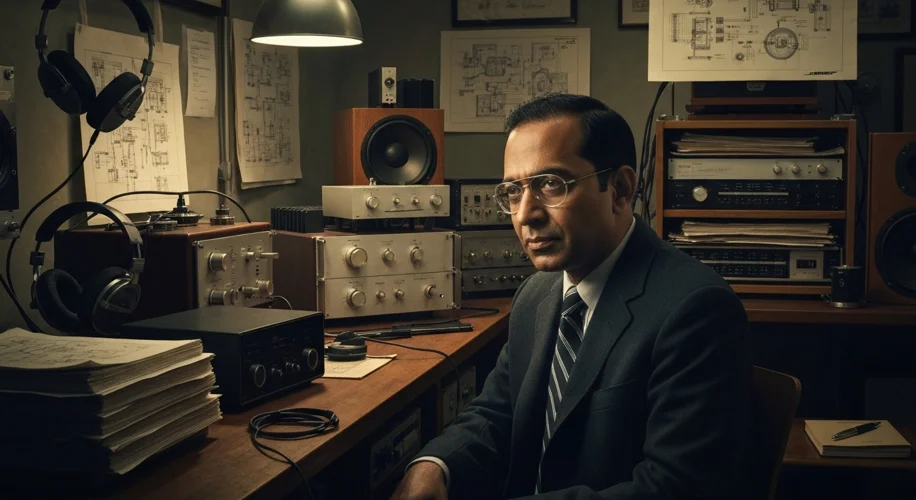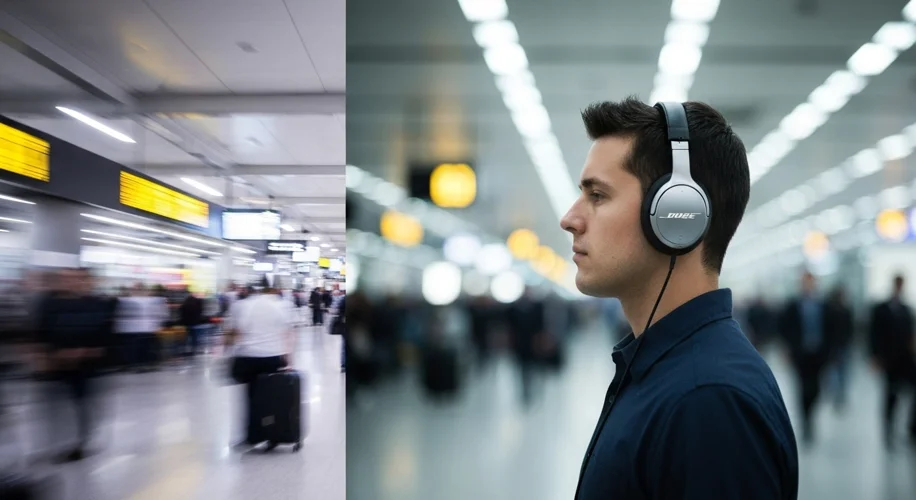Imagine a world where the roar of an airplane engine fades to a whisper, where the cacophony of a bustling city becomes a distant murmur. This wasn’t always a reality. For decades, the constant hum and din of modern life were an inescapable part of our auditory experience. Then, a breakthrough emerged, a technology that promised to reclaim our personal soundscapes: noise-canceling. And at the forefront of this revolution stood Bose.
Our story begins not with a sleek headphone, but with a frustrated pilot. In the late 1970s, Dr. Amar G. Bose, founder of the eponymous audio company, was on a flight. He was wearing a pair of headphones, but the deafening drone of the engines overwhelmed the music he was trying to enjoy. This wasn’t just an inconvenience; for pilots and frequent flyers, it was a daily assault on their senses, contributing to fatigue and stress. Dr. Bose, a physicist and engineer with a passion for acoustics, saw an opportunity – a problem begging for an elegant, technological solution.

The concept of active noise cancellation (ANC) had been theorized for some time, but its practical application was a monumental challenge. The idea is deceptively simple: microphones on the outside of the headphones detect ambient noise. This noise is then analyzed, and an inverse sound wave – essentially an “anti-noise” – is generated. When this anti-noise is played through the headphone speakers, it cancels out the incoming noise, creating a pocket of silence.
However, the execution was far from simple. The system needed to be incredibly fast, responding to fluctuating sounds in real-time. The “anti-noise” had to be precisely calibrated to match the incoming noise, a complex feat given the unpredictable nature of the real world. Early attempts were often bulky, power-hungry, and produced noticeable artifacts. Many believed it was a technological pipe dream.
Undeterred, Dr. Bose and his team poured years of research and development into overcoming these hurdles. They delved into the intricacies of acoustic physics, signal processing, and material science. Their efforts focused on creating efficient, lightweight components that could deliver effective noise cancellation without compromising sound quality. The breakthrough came with the development of specialized chips and algorithms that could process sound waves with unprecedented speed and accuracy.

Finally, in 2000, Bose unveiled the QuietComfort 1 headphones. The impact was immediate and profound. For the first time, consumers could experience a dramatic reduction in ambient noise, transforming their listening experience and their travel comfort. Suddenly, the drone of airplane cabins, the chatter of crowded cafes, and the rumble of subway trains could be significantly muted, allowing music, podcasts, or simply the luxury of quiet to take center stage.
The QuietComfort line didn’t just offer a new feature; it created a new category. Before Bose, headphones were primarily about delivering sound. The QuietComfort series introduced the concept of controlling one’s auditory environment. This had far-reaching implications:
- Enhanced Travel Comfort: Frequent flyers and train commuters found relief from the constant noise, making journeys more restful and enjoyable.
- Improved Focus: Students, office workers, and anyone needing to concentrate in noisy environments discovered a tool to create their own productive bubble.
- Audiophile Experience: By reducing background noise, ANC allowed listeners to perceive more subtle details in their music, offering a richer and more immersive audio experience.
Subsequent iterations, like the QuietComfort 2, 3, and later the QC series (QC15, QC25, QC35, etc.), continued to refine the technology, improving comfort, battery life, and noise-canceling effectiveness. Bose became synonymous with noise cancellation, setting a benchmark that competitors would strive to meet.

Bose’s QuietComfort headphones didn’t just change how we listen to music; they fundamentally altered our relationship with sound and our ability to curate our personal acoustic spaces. They turned a persistent annoyance into an opportunity for peace, proving that sometimes, the most powerful innovation is the one that brings us the sound of silence. The legacy of Dr. Bose’s frustration on that airplane continues to resonate, allowing millions to escape the noise and find their own quiet comfort.

